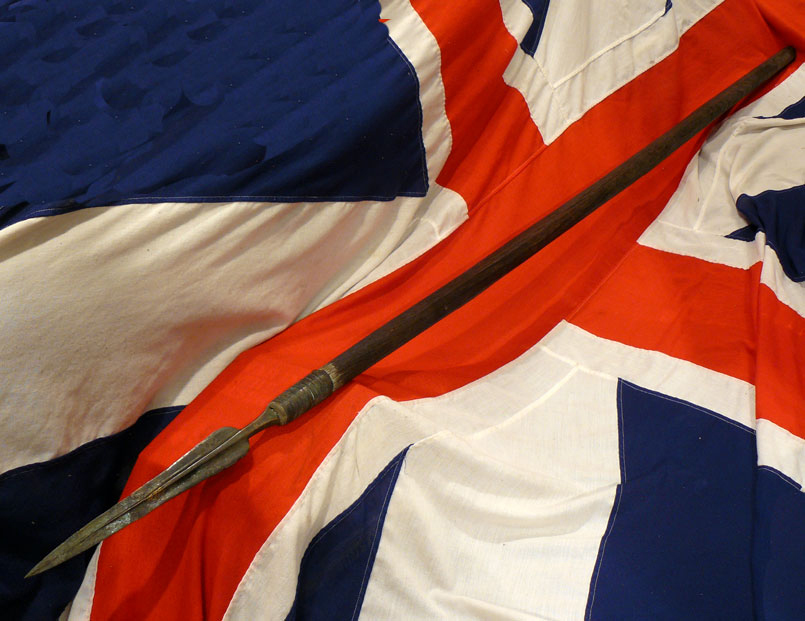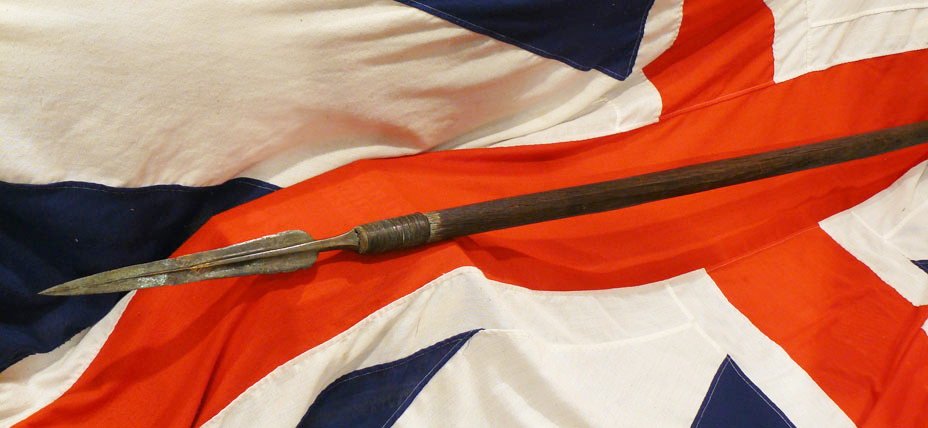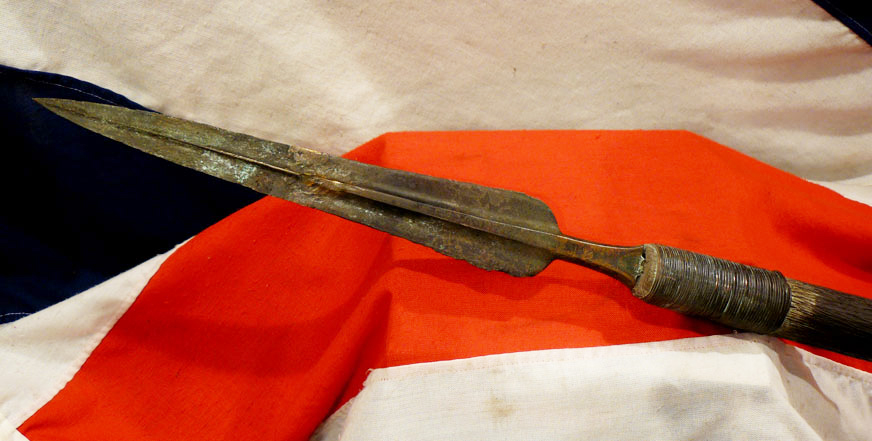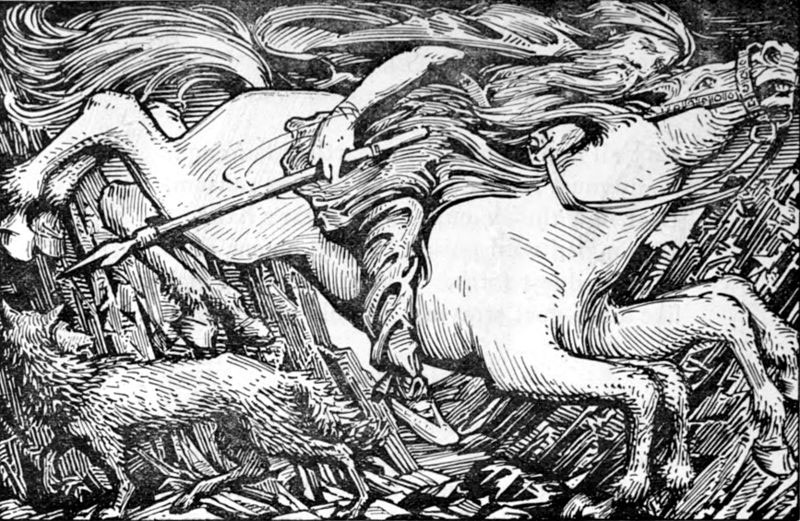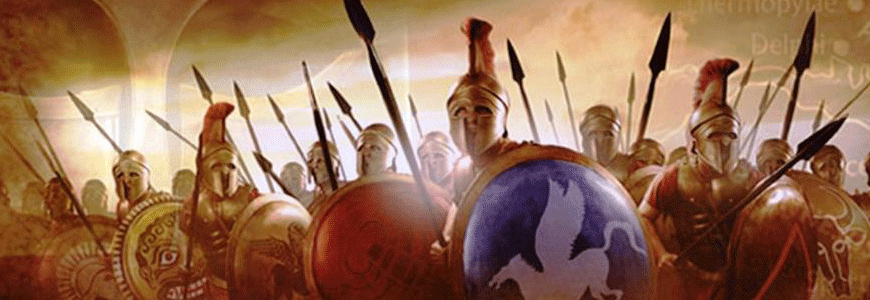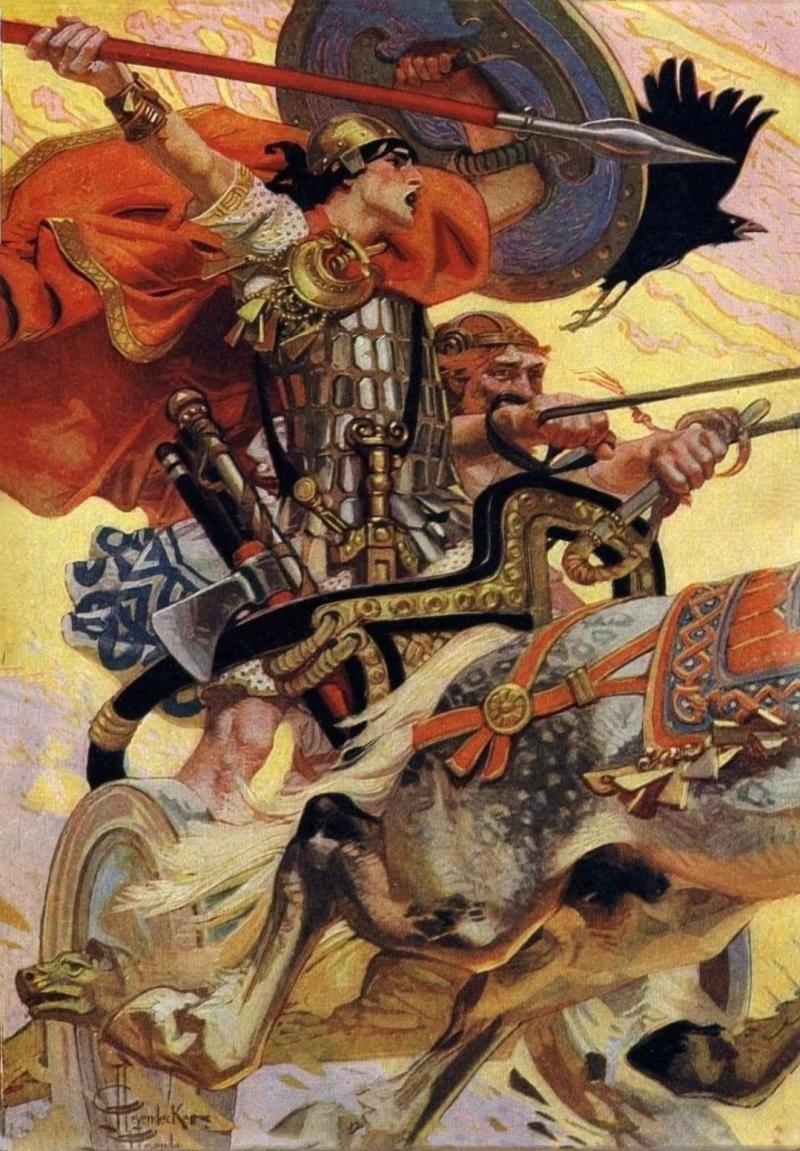A Fascinating Original Bronze Age Spear or Lance Around 3400 Years Old From The Ancient Heroic Age, the Era of the Trojan War of Achilles and Hector. Old Oak Re-Hafted Likely a Century Or More Ago and Wire Bound
It is mounted on an early haft, but added much later, in the early wire bound manner. Used, for example by any of the great bronze age warring peoples such as the ancient Spartans, Minioans, Greeks,Thracians, or the Mycenaea.
Spearheads were mostly made in two-piece moulds which have been found in Ireland and the Highlands. During the Early Bronze Age soft stone moulds were used but in the late Bronze Age clay moulds became more popular. There is no evidence to indicate that bronze moulds were used to cast spearheads. After casting a spearhead would have been finished, hammered and occasionally decorated. The remains of hafts are occasionally recovered inside spearheads and they indicate that hafts were mostly made of ash and pinewood. Looped spearheads were probably secured by a cord, copper or leather thong. Pegged spearheads would have been pegged to the spear haft by bronze or wooden pegs. The variation of spearhead size indicates they may have been used for different purposes. For example smaller spearheads may have been thrown while larger ones may have been used as thrusting lance type weapons. Evidence suggests that they were mostly used in warfare and hunting. Some large decorative and barbed spearheads may have been used in ceremonies as they appear to be too large and valuable for fighting or hunting. Like many weapons, a spear may also be a symbol of power. In the Chinese martial arts community, the Chinese spear is popularly known as the "king of weapons".
The Celts would symbolically destroy a dead warrior's spear either to prevent its use by another or as a sacrificial offering.
In classical Greek mythology Zeus' bolts of lightning may be interpreted as a symbolic spear. Some would carry that interpretation to the spear that frequently is associated with Athena, interpreting her spear as a symbolic connection to some of Zeus' power beyond the Aegis once he rose to replacing other deities in the pantheon. Athena was depicted with a spear prior to that change in myths, however. Chiron's wedding-gift to Peleus when he married the nymph Thetis in classical Greek mythology, was an ashen spear as the nature of ashwood with its straight grain made it an ideal choice of wood for a spear.
The Romans and their early enemies would force prisoners to walk underneath a 'yoke of spears', which humiliated them. The yoke would consist of three spears, two upright with a third tied between them at a height which made the prisoners stoop. It has been surmised that this was because such a ritual involved the prisoners' warrior status being taken away. Alternatively, it has been suggested that the arrangement has a magical origin, a way to trap evil spirits.The word subjugate has its origins in this practice
In Norse Mythology, the God Odin's spear (named Gungnir) was made by the sons of Ivaldi. It had the special property that it never missed its mark. During the War with the Vanir, Odin symbolically threw Gungnir into the Vanir host. This practice of symbolically casting a spear into the enemy ranks at the start of a fight was sometimes used in historic clashes, to seek Odin's support in the coming battle. In Wagner's opera Siegfried, the haft of Gungnir is said to be from the "World-Tree" Yggdrasil.
Other spears of religious significance are the Holy Lance and the Lúin of Celtchar, believed by some to have vast mystical powers. The Lúin of Celtchar (Irish: Lúin Celtchair) is the name of a long, fiery lance or spear belonging to Celtchar mac Uthechar and wielded by other heroes.
Also known is Birgha (Spit-Spear) the Spear of Fiacha (or Fiacail), Birgha that was an Irish enchanted, venomous spear. The warrior Fiacha, a follower of Cumal (a leader of the Fianna), gave the spear to Cumal’s son Fionn mac Cumhail so that he might defeat Aillén, an evil creature/former member of the Tuath Dé Danann who resided, three-hundred-and-sixty-four days a year, in the Otherworld. Each and every Samhain the monster—nicknamed “the burner”—would wreak havoc on the royal residence of Tara (also: Teamhair) with his fire-breath after lulling its defenders to sleep with enchanted music. Specifically, Aillén plays—or weaponizes, I should say—the suantraí (lullaby) strain of ancient Irish music, which is frequently deployed by gods, druids, and other musicians in the myths in order to incapacitate opponents.
That’s where Birgha comes into play.
In Lady Gregory’s version of events, Fiacha teaches Fionn how to unlock the power of the spear, instructing his pupil as follows:
“When you will hear the music of the Sidhe, let you strip the covering off the head of the spear and put it to your forehead, and the power of the spear will not let sleep come upon you.”
Sir James George Frazer in The Golden Bough noted the phallic nature of the spear and suggested that in the Arthurian Legends the spear or lance functioned as a symbol of male fertility, paired with the Grail (as a symbol of female fertility). The picture in the gallery is of the Norse god Odin, carrying the spear Gungnir on his ride to Hel, note the thickness of the haft and the binding of the tang.
Cú Chulainn, also called Cuchulain, Cuchulinn, or Cuchullin is the central character of the Ulster (Ulaid) cycle in the in medieval Irish mythology and literature. He was the greatest of the Knights of the Red Branch and had magical powers. His name means 'Culann's Hound'.
See photo 7 in the gallery.
Blade 15.5 inches long not including tang Overall 75 inches long. Due to excessive length we offer it for sale only within UK mainland. The spears central rib has had an old repair on the blade.
Code: 22602
1395.00 GBP

